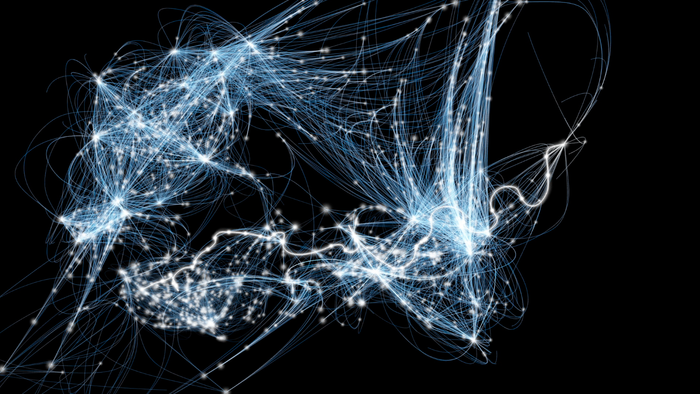Udit // CLOUDS
Thoughts and responses to some of the discussions in the documentary CLOUDS are as follows:
- “Data. Complexity. Emergent behavior in people.”
In modern day context, data is the gold individuals, collective and organizations are looking for. The processing of this data has led us to create complex models and networks that connect and analyze this data. Modern day tools help individuals to study, simulate and re-create the infrastructure behind the networks. AIs, Interaction practices, Soft-computing techniques like Neural networks, Ant-colony optimization, Particle Swarm behaviors etc. have all aided in understanding the emergent behaviors in people and creating learning and predictive models to realize them. These emergent behaviors can then again be localized (physical) or delocalized (like consumer marketing, collaborative web spaces and setups, communication etc.).
- ” Bold colors. Before perception. Getting into brains. -Ryuichi Kurakawa. ”
The idea of getting into the brain of people through use of technology (bold colors, sounds, visuals etc.) before them able to perceive it makes me think of different layers to the process of interpretation in people. Presence, Sensation and Perception form the stream of consciousness in people and in that order. We perceive only those things that we are able to sense through our 5 senses. For example, chair is present. One senses it that it is present under them and then perceive that they are sitting on it. An interesting way to look and understand the different layers of interpretations and how can we as designers, artists, technologists leverage the dialectical philosophical thoughts and use them for psychological and neuro-scientific purposes. - ” Creating Provocations. Loop holes. No specific narratives. ”
There are layers involved in communication between people (judgement filters that people have for processing information). The information is pre-processed in one brain based on the subjective experiences they’ve had and it then gets translated to the other side and filtered through the subjective judgements of the other. This leads to a lot of loss in information during communication. Peoples’ interpretation of things is always subjective. Artists often produce abstracted works for the viewer to interpret them in their own subjective thoughts to target individual emotions, memories and feelings. They project their own version of reality but leave loopholes or create provocations to make the users think and experience them in their own subjective ways.
